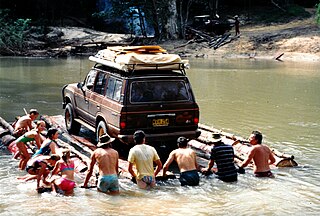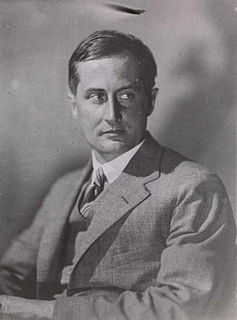The Barungguan are an indigenous Australian people of the Cape York Peninsula of Northern Queensland. The name is associated with three languages, Ganganda, Umpithamu and Morrobolam.
The Pakadji people, also known by the southern tribal exonym as the Koko Yao, were an Indigenous Australian group of Cape York Peninsula in northern Queensland. The ethnonym Koko Ya'o is said literally to mean 'talk, speech' (koko/kuku) 'this way' (ya'o), though this has been questioned.
The Olkolo or Koko-olkola' are an Indigenous Australian people of central and eastern Cape York Peninsula in northern Queensland. According to Norman Tindale, they are to be distinguished from the Kokangol, higher up on the Alice River watershed.
The Otati, or Wutati, were an Indigenous Australian people of central and eastern Cape York Peninsula in northern Queensland, according to Norman Tindale, though the ethnonym may designate the same people as the Wuthathi.
The Night Island Kawadji, or Uutaalnganu, were an Indigenous Australian group of Cape York Peninsula in northern Queensland. The name, which means is also used collectively for several tribes in this area, such as the Pontunj / Jangkonj (Yanganyu), whose language is unconfirmed.
The Umpila are an Indigenous Australian people of the eastern Cape York Peninsula in northern Queensland. The majority of the remnant of the Umpila now live in Lockhart.
The Umpithamu, also once known to ethnographers as the Koko Ompindamo, are a contemporary Indigenous Australian people of the eastern Cape York Peninsula in northern Queensland. Norman Tindale, transcribing their ethnonym Umpithamu as Umbindhamu, referred to them as a horde of the Barungguan.
The Pontunj, also called the Yankonyu, are a contemporary Indigenous Australian people of the eastern Cape York Peninsula in northern Queensland.
The Tulua were an indigenous Australian tribe of Queensland.
The Goeng or Goeng Goeng were an indigenous Australian tribe of the state of Queensland. They lived in the area of the area of present day Gladstone.
The Unjadi (Unyadi) were an indigenous Australian people of the Cape York Peninsula of northern Queensland.
The Barranbinya, also written Baranbinja, were an indigenous Australian people of New South Wales.
The Ankamuti were an indigenous Australian people of the Cape York Peninsula of Queensland.
The Ngathokudi (Ngadhugudi) were an indigenous Australian people of the state of Queensland. Their language was possibly a dialect of Uradhi.
The Maikathari (Mayi-Thakurti) were an indigenous Australian people of the state of Queensland.
The Wikatinda were an indigenous Australian people of the Cape York Peninsula of northern Queensland. They were one of the Wik peoples, but their language is unattested.
The Wik Elken (Wik-Kalkan), or Wik-Ngatharr, were an indigenous Australian people, one of the Wik tribes of the Cape York Peninsula of the state of Queensland.
The Nggamadi were an indigenous Australian people of the Cape York Peninsula of northern Queensland.
The Djerait were an indigenous Australian people of the Northern Territory
The Ngolokwangga are an indigenous Australian people of the Northern Territory.





